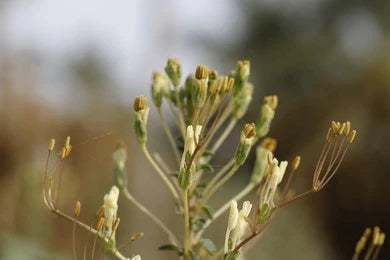All cultures worldwide have relied on traditional herbal medicine to meet their healthcare needs; natural herbal management is far more cost-effective and side-effect-free than other conventional medicine. Ayurveda is one of the oldest healthcare systems and uses herbal medicines to help heal the body. The active ingredients in herbs are derived from plants, which aids in the body's natural healing process. Numerous herbs can be taken alone or combined to make herbal medications. Among these is Tilparnni. Gynandropsis gynandra is a member of the Capparidaceae family. Tilparnni comes in two varieties: Cleome viscosa and Gynandropsis gynandra. Herb tulparnni is good for Kapha-Vataj vikara. Although it is often found in warmer climates, this herb is extensively spread throughout tropical Africa, Southeast Asia, and other tropical and subtropical nations. So now we will talk about the benefits and dosage of a herb called Tilparnni.
Special Note About This Plant
- Tilparnni is very helpful in conditions associated with Kapha-Vataj.
- Two significant chemicals present in Tilparnni variants that contribute to the herb's demonstrated effectiveness in treating a range of ailments are cleomine and viscosin.
- Animal poisoning, worm infestation, otalgia, rheumatoid arthritis, abscess, and many other conditions can benefit from this herb.
Systemic Classification
- Botanical Name - Gynandropsis gynandra
- Family - Capparidaceae
- Genus - Gynandropsis
- Species - G. gynandra
Synonyms
- Til parni - The til herb was similar to its leaves.
- Pootigandha - Smells awful
- Ugragandha - It has a strong, overpowering scent.
Other Vernacular Names
- Hindi Name - Hulhul, hurhur
- Bengali Name - Huddhuddiya
- Malayalam Name - Tilvan
- Gujarati Name - Talvani
- Punjab Name - Bogra
- Marathi Name - Bagro
- Telugu Name - Kukkvaminta
Habitat
- It is an upright annual plant with a maximum height of 150 cm under ideal circumstances.
- This plant has several stems on a thick glandular stalk.
- The alternating, petiolated leaves have three to seven leaflets each.
- The leaflets are sessile, lanceolate, obovate, elliptical, and have toothed, sparsely hairy borders. The apex is obtuse to rounded and acute.
- Bisexual flowers have four 1.5-centimeter-long petals and three to four sepals. Based on color, it comes in three varieties: Cleome viscosa, a reddish flower, Gynandropsis gynandra, and white-colored Gynandropsis gynandra. The variant with a white tint is utilized medicinally.
- Fruits are broad, dehiscent capsules that are long, cylindrical, and narrow in shape.
- The subglobose seeds range in color from grey to black.
Ayurvedic Properties
|
|
Hindi / Sanskrit |
English |
|
Rasa (Taste) |
Katu |
Pungent |
|
Guna (Physical Property) |
Tikshana |
Sharp |
|
Virya (Potency) |
Ushna |
Hot |
|
Vipaka (Post-Digestive Taste) |
Katu |
Pungent |
Effects on Doshas
This plant is highly beneficial for achieving a balance between the Vata and Kapha doshas.
- Fruit: Harmonizes Pitta and Vata doshas.
- Bark: Harmonizes the doshas of Vata and Kapha.
Practical Uses
- This plant works wonders for ailments of the Kapha-vataj type.
- The external application of this helps to alleviate pain, lessen burning, and lessen discomfort.
- This herb has anti-epileptic properties as well.
- Owing to its Ushna Veerya, this is beneficial as a carminative, an appetizer, a pain reliever, and an antibacterial.
- The anti-cancer effects of this herb are also present in the white version of the plant.
- encourages perspiration, which is beneficial for bringing down a fever.
- Its oil or decoction of leaves is beneficial for otalgia.
- Leaf paste is beneficial for rheumatoid arthritis.
- You can also use leaf paste on infections or abscesses.
- Additionally, leaf paste can be administered on dog and snake bites.
- For optimum effects, apply this herb to chronic skin disorders.
Part used
Seeds, Leaves, Roots
Dosage
If used in excess, it may aggravate the pitta dosha and lead to difficulties. For this, then, you might apply the Madhur rasa herb's pitta Shamak therapy.

